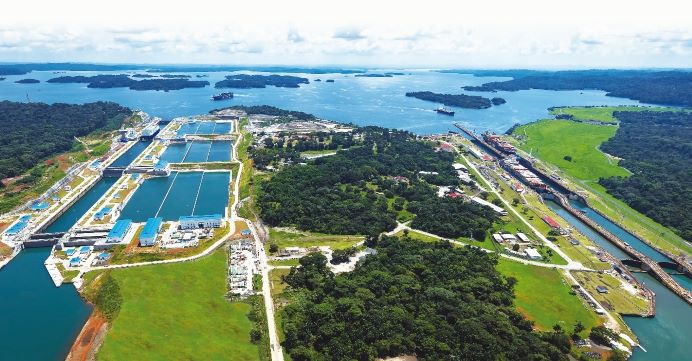Archives
Freight News, Sea
Panama Canal Reboots Decarbonization
[ August 5, 2020 // Gary G Burrows ]In July, the Panama Canal joined virtual informal talks organized by the International Maritime Organization (IMO). Although focused specifically on short-term measures for reducing GHG from ships, the discussions brought momentum back to the broader, industry-wide efforts around the decarbonization of shipping. These milestones, combined with recent industry announcements, not only signal a turning point in scaling up the shipping sector’s ambitions to achieve decarbonization, but also confirm the Panama Canal’s holistic approach to sustainability and how it can serve as an effective blueprint for maximizing carbon reduction across supply chains.
At an earlier IMO meeting, Panama presented a document to the IMO entitled: “The optimization of maritime routes as short-term measures to reduce emissions.” It outlined the various factors that impact a ship’s emissions while at sea, ranging from weight of cargo to speed, underscoring that each one must be considered and optimized to cut emissions significantly, a necessary step to meet the IMO’s goal of decreasing CO2 emissions per transport work by at least 40% by 2030 and a total annual GHG emissions by at least 50% by 2050 compared to 2008 across international shipping.
Using insights from the Panama Canal, the proposal called attention to route optimization as a critical tool that, if used across the industry, could offer a tangible, exponential reduction of CO2 and other GHG emissions from ships, in addition to costs, fuel and other savings. An optimal route can amount to up to 10% of GHG reduction potential, based on time reduction and navigation distances, according to the IMO.
Since opening over a century ago, the Canal has become a key proponent for optimized routing, having directly contributed to the reduction of 800 million tons of CO2 emissions. This is in part because the Panama Canal allows shippers travelling from Asia to the U.S. West Coast to save 12 percent and 18 percent fewer emissions compared to the Suez Canal or Cape of Good Hope route, respectively, by shortening the distance and saving time, fuel and additional costs.

Tags: Panama canal









